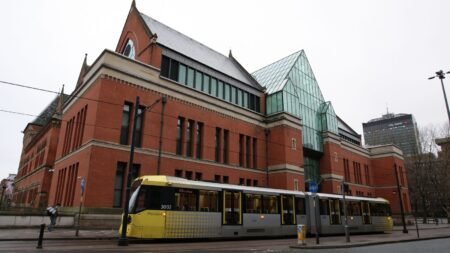An investigation was initiated following uploading a TikTok video last week depicting content creators exploring the derelict Baggot Street Hospital in Dublin.
Uploaded on Tuesday, the video features two individuals navigating through the abandoned hospital, documenting their exploration of various wards and rooms, and stumbling upon folders containing hospital records.
The Health Service Executive (HSE) has clarified that the site does not store patient records or personal information, despite the footage showing the interior’s decrepit state with peeling paint, exposed wires, and scattered debris.
The video showcases the deteriorating condition of the building, including waste strewn in corridors and side rooms, as well as visible X-ray equipment.
The creators behind the video specialise in exploring abandoned structures, primarily in Northern Ireland, and have garnered attention for their content.
A spokeswoman for HSE’s Community Healthcare East division emphasised the seriousness of the situation, stating that an active criminal investigation is underway, limiting the details that can be disclosed.
Despite the hospital no longer operational, stringent security measures are in place to safeguard the premises and ensure patient confidentiality, according to the HSE spokeswoman.
Collaboration with An Garda Síochána is ongoing as efforts are made to address the situation and maintain security protocols.
Specific safety measures implemented at the site cannot be divulged for security reasons, but assurances have been given that security measures align with established vacancy protocols.
The Baggot Street facility, originally named the Royal City of Dublin Hospital, ceased operations in 1987 and has since undergone various uses, including as a drug treatment and community facility until 2019.
The HSE has engaged conservation architects to explore potential future uses for the building, such as a meeting or administration centre, as reported by The Irish Times.
Discussions regarding the building’s future have sparked debates among campaigners, with proposals ranging from housing asylum seekers or individuals from Ukraine to repurposing the site for cultural and community endeavours, reflecting diverse community interests and priorities.














